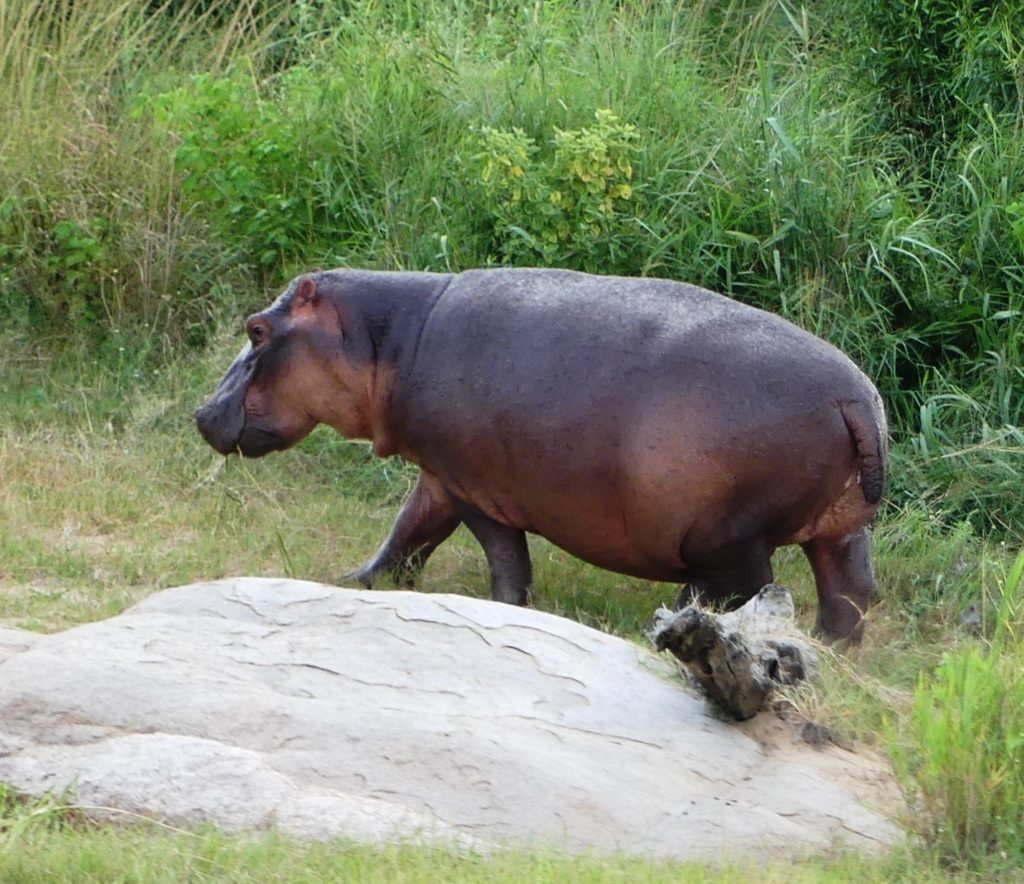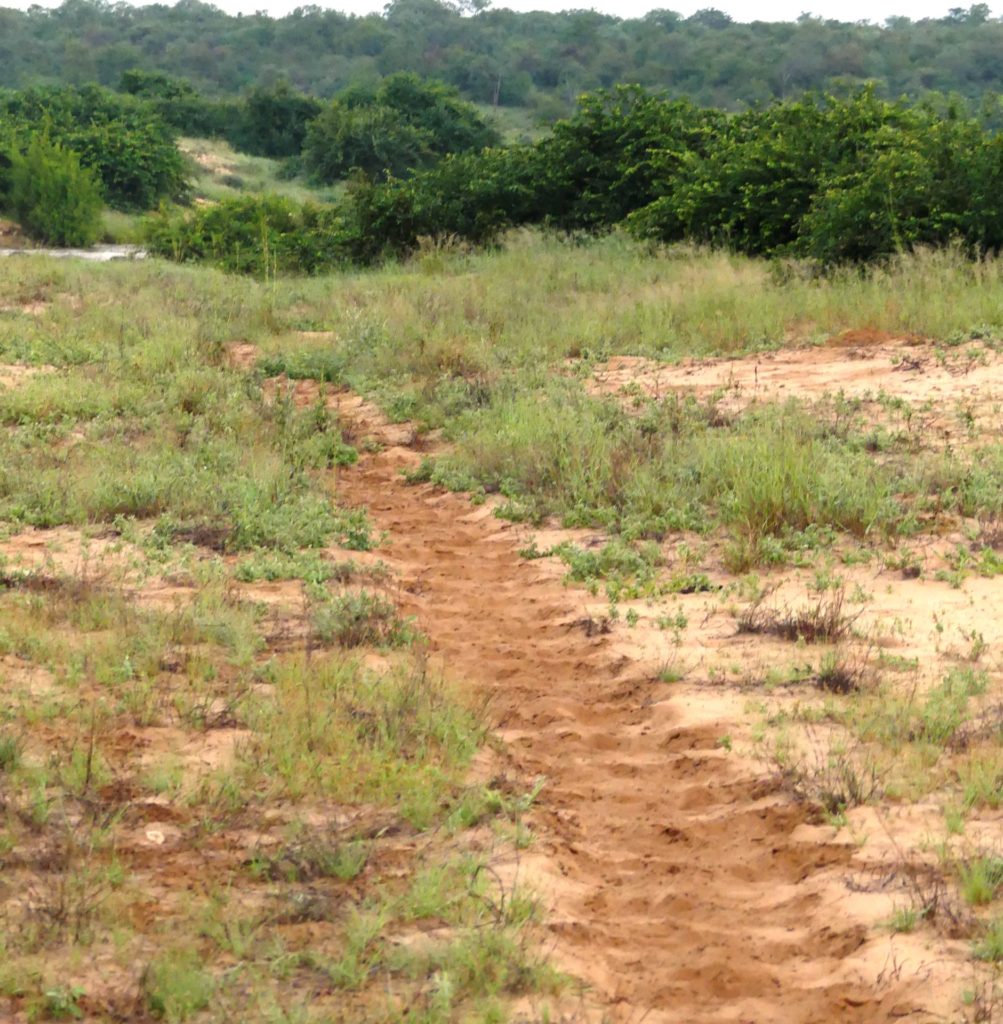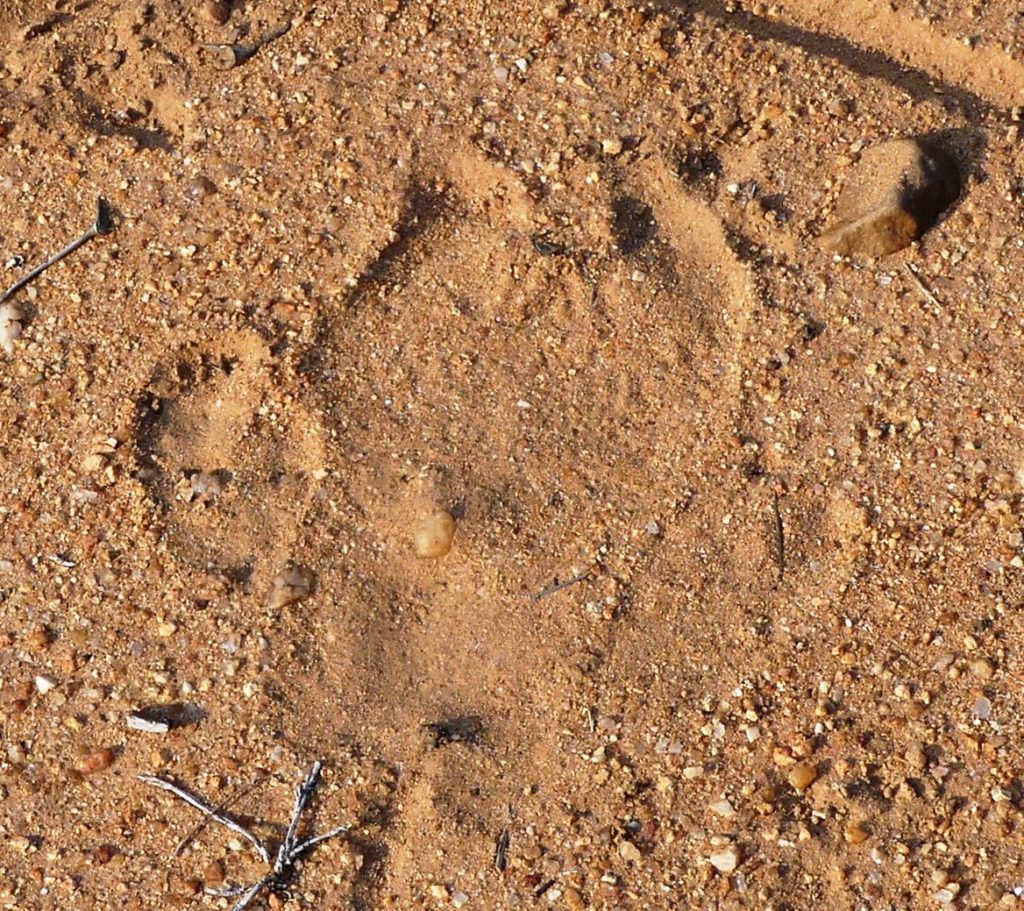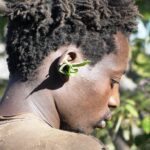Hippopotami of the species Hippopotamus amphibius (‘Hippos’) are widely distributed over Sub-Saharan African savannah biomes. They were declared a ‘vulnerable’ species, as over the last ten years, the population declined between 7% and 20%. In total, there were about 130,000 – 140,000 animals left in 2022. And all of the hippos are dangerous on land.

They live in family groups, with the dominant male vigorously defending his territory in water. On such occasions, and especially under confined conditions, human-hippopotamus interaction can get very serious for humans. Submerged hippos can rarely be seen, and boats capsize often. Wading fishermen checking their nets are also highly vulnerable. Both of these accident scenarios lead to the second-highest number of human fatalities suffered by animals in Africa. Most fatalities occur through mosquitoes.
Three main types of animal trails in Southern Africa

On land, hippos have a home range that they mark with feces and urine but typically do not defend. Hippos walk on land every evening for grazing and sometimes return in the morning. They always use the same exit-/entry point from and to the water. They regularly use trails from this point to their preferred grazing area. These trails show two distinctive rows of parallel tracks, typical for hippos. See the picture above.
Besides hippo trails, there are two other types of communal animal trails. Trails regularly used by elephants are wider and flat trampled and do not show these two rows of hippo tracks. The third one is the so-called ‘mixed animal trails’. These trails are used by antelopes and other animals, filled with small-hooved tracks, and often lead to water. Therefore, an experienced person in the landscape can spot a ‘hippo road’. This website has a dedicated article about these different types of trails, which are also essential to know when looking for water.
Getting run down by a hippo
If a human uses this trail in the morning and a hippo is spooked at his grazing area further inland, the hippo will take his hippo trail back toward safety. If this human is between the running hippo (regular speed of about 17 km/h) and water on the hippo trail, he must jump very fast off the track. Otherwise, he will get run over, and hippos are dangerous in this scenario.
Trying to defend an agricultural lot against hippos
Hippo walks in the evening to juicier vegetables at a farmer’s garden instead of munching grass on meadows. The farmer will vigorously defend his subsistence vegetable lot with whatever he has. Which are very often only sticks or spears. Such confrontations are dangerous for both sides, and farmers are often trampled or bitten.
Danger of female hippos with newborns
Some days before giving birth, pregnant female hippos will leave the herd. They look for a secluded place on land next to water. There, they will spend about two weeks wholly separated from other hippos. This time serves to rear the newborn and imprint their characteristics on each other. So they never get lost from each other again. During all that time from leaving the herd, female hippos on land are dangerous and highly aggressive towards any intruder.
Meeting a displaced male hippo in the bush
This is the most dangerous scenario, as it happens regularly in the hippo country. And the location of this danger cannot be foreseen. It is the case when a challenger defeats a dominant male hippo. In nearly all cases, the loser – the old and former dominant male – will be heavily injured after the fight. Open, gaping wounds over the whole body, and he has to leave ‘his’ water. He can’t go back into this water again. Therefore, he has to wander around to find a watery place, which another dominant male has not already taken.
He often has to walk over hills to other valleys or vast savanna plains to find a new home. In the meantime, his wounds are getting infested. Carnivores will smell it, and he is getting itchy and aggressive, so he needs to ward off those dangers. Often, they will lie down for a rest in the middle of the Bushveld. And if an unsuspecting human is coming around the corner, he will attack him. This human would never have thought he would meet a hippo in the middle of nowhere, far away from water. But it happens.
All four scenarios happen in real life. And it is not an evil character of hippos per se, but just circumstances. This big, fast-moving animal wants to defend himself and return to safety.
Lessons learned why hippos are dangerous on land.
- Don’t walk between deep, open water and grazing areas on hippo trails in the morning. Not only are returning hippos the danger but also grazing buffaloes.
- Stay away from reed beds and heavy vegetation near water. This could be the nursery of Mrs. Hippo and her child. Or a crocodile nest with a defending female croc. Or just a grumpy old Dagha-Boy (old Buffalo Bull). The likelihood of meeting one of these inhabitants there is very high.
- As a Guide or Back-up Guide on a trail, be constantly alert and observe all SOPs.
Further readings about Dangerous Game in Southern Africa on this website:
African buffaloes are dangerous
Lion behavior – so different by day and night
Recipe for disaster – elephant bulls in musth
Spotted beauties: Leopards in Southern Africa
Danger posed by Nile crocodiles
Spotted hyenas are successful hunters
.






